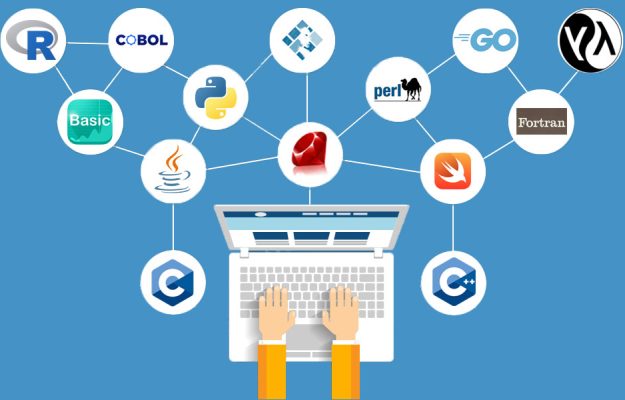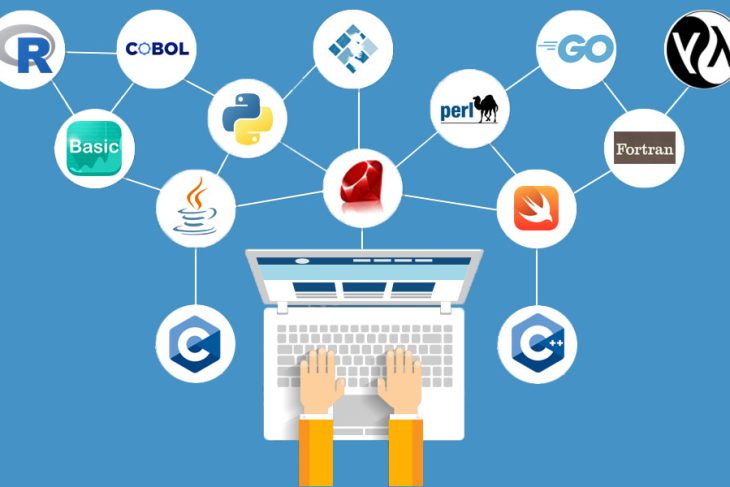
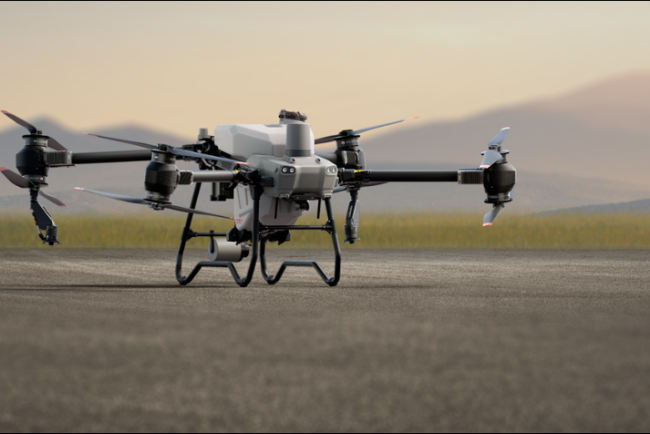
by admin
The Astonishing Capabilities of Future Drones
On October 11, 2019, the surveillance capabilities of four drones designed by Anna University in India were showcased when they provided high-precision monitoring along a 50 km route traveled by Chinese President Xi Jinping’s convoy. These drones amazed us with their ability to achieve a […]
Industrial
by admin
Finland’s Upcoming Launch of Self-Driving Shuttle Service Signals Technological Progress
Finland is making significant strides in the realm of autonomous transportation as it prepares to introduce a self-driving shuttle service this fall. The launch of this innovative project showcases Finland’s commitment to embracing advanced technologies and highlights the potential benefits of self-driving vehicles in urban […]
Smart Cities
by admin
Decoding the Strategy to Construct a Smart City
The concept of smart cities has gained significant traction in recent years, as governments and urban planners strive to create innovative and sustainable urban environments. Building a smart city requires careful planning, collaboration, and the integration of cutting-edge technologies. In this article, we will delve […]
Smart Cities
by admin
Achieving Work-Life Balance in a Startup: 5 Strategies for Success
Working at a startup can be an exhilarating experience, but it often comes with long hours, high pressure, and a fast-paced environment. Finding a balance between work and personal life becomes crucial to avoid burnout and maintain overall well-being. In this article, we will explore […]
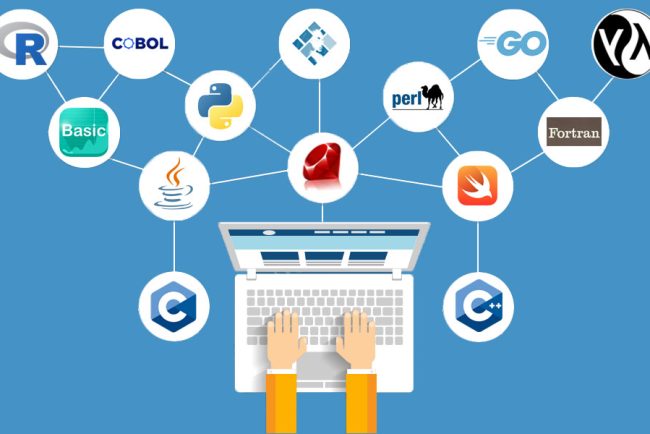
by admin
Exploring the Applications of Natural Language Processing (NLP) in Various Fields
As an Internet information blogger, I am fascinated by the potential of Natural Language Processing (NLP) and its impact on our daily lives. NLP is a technology that allows machines to understand and process human language, combining elements of linguistics, computer science, and artificial intelligence. […]
Industrial
by admin
The Transformation of Travel: Exploring the Impact of Connected Technology
In today’s digital age, connected technology is revolutionizing the way we travel. From planning our trips to navigating unfamiliar destinations, technology has become an integral part of our travel experiences. Let’s delve into how connected tech is changing the landscape of travel and enhancing our […]
Lifestyle
by admin
Exploring the Applications of Natural Language Processing (NLP) in Various Fields
As an Internet information blogger, I am fascinated by the potential of Natural Language Processing (NLP) and its impact on our daily lives. NLP is a technology that allows machines to understand and process human language, combining elements of linguistics, computer science, and artificial intelligence. […]
Industrial
by admin
The Transformation of Travel: Exploring the Impact of Connected Technology
In today’s digital age, connected technology is revolutionizing the way we travel. From planning our trips to navigating unfamiliar destinations, technology has become an integral part of our travel experiences. Let’s delve into how connected tech is changing the landscape of travel and enhancing our […]
Lifestyle
by admin
Building a Future-Ready Warehouse: Nurturing Connectivity and Automation
The concept of the warehouse of tomorrow represents a visionary approach to warehousing and distribution. It envisions warehouses designed with connectivity and automation at their core, promising enhanced efficiency and productivity in storage and fulfillment processes. To achieve this, companies need to focus on modernization […]
Industrial
by admin
Achieving Work-Life Balance in a Startup: 5 Strategies for Success
Working at a startup can be an exhilarating experience, but it often comes with long hours, high pressure, and a fast-paced environment. Finding a balance between work and personal life becomes crucial to avoid burnout and maintain overall well-being. In this article, we will explore […]
Startups
Unleashing the Potential of Industry 4.0 Investments through Wireless Power
by admin
The fourth industrial revolution, commonly known as Industry 4.0, has brought forth a wave of technological advancements that are transforming the manufacturing sector. From automation and artificial intelligence to the Internet of Things (IoT), businesses are investing heavily in these cutting-edge technologies to enhance productivity […]
Industrial
The fourth industrial revolution, commonly known as Industry 4.0, has brought forth a wave of technological advancements that are transforming the manufacturing sector. From automation and artificial intelligence to the Internet of Things (IoT), businesses are investing heavily in these cutting-edge technologies to enhance productivity and efficiency. However, one crucial aspect that often goes unnoticed is the power infrastructure supporting these innovations. Wireless power technology, with its ability to provide efficient and convenient energy transfer, holds the key to unlocking the full potential of Industry 4.0 investments. In this article, we will explore how wireless power can revolutionize the manufacturing landscape and maximize the benefits of Industry 4.0.
Enhanced Flexibility and Mobility: Traditional power cables and wired connections limit the mobility and flexibility of manufacturing equipment and devices. With wireless power technology, machines and sensors can operate without the constraints of physical power cords. This allows for greater flexibility in factory layouts, enabling manufacturers to reconfigure production lines and adapt to changing demands more efficiently. Wireless power eliminates the need for constant cable management and reduces the risk of accidents caused by tripping over cords. It also simplifies the deployment of IoT devices, enabling seamless connectivity and real-time data exchange across the manufacturing ecosystem.
Improved Efficiency and Productivity: Wireless power technology offers significant improvements in efficiency and productivity. The elimination of power cords and connectors reduces downtime caused by maintenance, repairs, and cable failures. This results in higher equipment uptime and increased production output. Moreover, wireless power enables dynamic charging, allowing machines and devices to charge while in operation. This eliminates the need for scheduled downtime for charging or battery replacement, further enhancing overall productivity. With wireless power, manufacturers can achieve continuous operation, optimize workflow, and maximize the utilization of their assets.
Scalability and Future-Proofing: The scalability of wireless power technology makes it an ideal solution for Industry 4.0 applications. As manufacturing processes evolve and expand, the wireless power infrastructure can easily accommodate new equipment, sensors, and devices without the need for extensive rewiring or modifications. This scalability enables manufacturers to future-proof their investments, ensuring that their power infrastructure can support emerging technologies and advancements. Whether it’s adding new assembly lines, integrating robotics, or adopting new IoT devices, wireless power simplifies the integration process, reduces installation time, and minimizes disruption to ongoing operations.
Sustainability and Safety: In addition to its operational benefits, wireless power technology contributes to sustainability and safety in manufacturing environments. By eliminating power cords, manufacturers can reduce energy waste associated with cable resistance and power losses. Furthermore, wireless power eliminates the risk of electrical hazards caused by damaged cables or improper handling. With a wireless charging infrastructure, manufacturers can create a safer work environment for their employees while minimizing the environmental impact of their operations.
Conclusion: Wireless power technology is a game-changer for the manufacturing industry in the era of Industry 4.0. It provides enhanced flexibility, improved efficiency, scalability, and sustainability, allowing businesses to fully leverage their investments in automation, AI, and IoT. By embracing wireless power, manufacturers can create a more agile and productive manufacturing environment, enabling them to stay ahead in today’s competitive landscape. As Industry 4.0 continues to evolve, wireless power will undoubtedly play a crucial role in powering the factories of the future.

by admin
Mastering E-commerce Trends: A Guide to Discovering, Tracking, and Setting Trends
In the rapidly evolving world of e-commerce, staying ahead of the curve is crucial for online businesses. Being able to identify, follow, and set trends can give e-commerce entrepreneurs a competitive edge. In this article, we will explore effective strategies and tools to help you […]
Startups
In the rapidly evolving world of e-commerce, staying ahead of the curve is crucial for online businesses. Being able to identify, follow, and set trends can give e-commerce entrepreneurs a competitive edge. In this article, we will explore effective strategies and tools to help you find, track, and capitalize on e-commerce trends.
Understanding the Importance of E-commerce Trends: E-commerce trends play a significant role in shaping consumer behavior and market dynamics. By keeping a finger on the pulse of these trends, businesses can align their strategies, offerings, and marketing efforts to meet evolving customer demands. Identifying emerging trends early on allows businesses to stay relevant, attract new customers, and drive growth.
Utilizing Market Research and Data Analysis: Market research and data analysis are invaluable tools for identifying e-commerce trends. Conduct thorough market research to understand your target audience, their preferences, and purchasing habits. Analyze industry reports, consumer surveys, and online discussions to uncover emerging trends. Leverage data analytics tools to track website traffic, customer behavior, and sales patterns. These insights will help you identify trends and make data-driven decisions.
Monitoring Social Media and Online Communities: Social media platforms and online communities are treasure troves of information when it comes to e-commerce trends. Follow industry influencers, thought leaders, and popular e-commerce brands on platforms like Instagram, Facebook, and Twitter. Engage in conversations and observe the discussions happening within relevant online communities, forums, and niche-specific groups. These interactions will provide valuable insights into emerging trends and consumer preferences.
Keeping an Eye on Competitors: Monitoring your competitors is another effective way to spot e-commerce trends. Observe their product launches, marketing campaigns, and website updates. Pay attention to customer reviews and feedback to understand what is resonating with consumers. By analyzing your competitors’ strategies, you can identify trends they are capitalizing on and explore how you can differentiate and innovate within those trends.
Exploring Industry Reports and News: Stay updated with industry reports and news publications focused on e-commerce. These sources often highlight emerging trends, innovative strategies, and success stories within the industry. Subscribe to newsletters, blogs, and magazines that provide in-depth insights and analysis of e-commerce trends. Attend industry conferences, webinars, and networking events to learn from industry experts and gain firsthand knowledge of the latest trends.
Leveraging Technology and Tools: In the digital age, numerous tools and technologies can help you track and leverage e-commerce trends. Utilize keyword research tools to identify popular search terms and topics related to your industry. Set up Google Alerts or use social media monitoring tools to receive notifications about trending keywords or mentions of your brand or industry. Additionally, leverage e-commerce analytics platforms to track sales trends, customer behavior, and market insights.
Experimenting and Innovating: Once you have identified e-commerce trends, it is essential to experiment and innovate within those trends. Consider how you can incorporate emerging trends into your product offerings, marketing campaigns, website design, and customer experience. Stay agile and open to testing new strategies and ideas. Measure the results and iterate based on feedback and data. By being proactive and adaptive, you can stay at the forefront of e-commerce trends and position your business for success.
Conclusion: In the fast-paced world of e-commerce, keeping up with trends is crucial for sustained growth and success. By utilizing market research, monitoring social media, tracking competitors, exploring industry reports, leveraging technology, and embracing experimentation, e-commerce entrepreneurs can discover, follow, and set trends in their industry. By staying ahead of the curve, businesses can attract new customers, build brand loyalty, and thrive in the competitive e-commerce landscape.

by admin
Mastering Time Management: 8 Practical Tips for Student Success
Time management is a crucial skill for students to develop. With the demands of academic work, extracurricular activities, and personal commitments, effective time management can make a significant difference in academic performance and overall well-being. If you’re looking to optimize your time and boost productivity […]
Lifestyle
Time management is a crucial skill for students to develop. With the demands of academic work, extracurricular activities, and personal commitments, effective time management can make a significant difference in academic performance and overall well-being. If you’re looking to optimize your time and boost productivity as a student, here are eight actionable tips to help you succeed.
- Prioritize Tasks: Start by identifying your most important tasks and deadlines. Create a to-do list and rank tasks based on their urgency and importance. This way, you can focus on the most critical assignments and avoid feeling overwhelmed.
- Set SMART Goals: Establish specific, measurable, achievable, relevant, and time-bound goals for your academic and personal endeavors. Break larger goals into smaller, manageable tasks to maintain motivation and track progress.
- Create a Schedule: Develop a weekly or daily schedule that includes dedicated time slots for studying, attending classes, participating in extracurricular activities, and personal relaxation. Stick to the schedule as much as possible to establish a routine and maximize productivity.
- Eliminate Time Wasters: Identify activities that consume excessive amounts of time without providing significant value. Limit or eliminate distractions such as social media, excessive screen time, and unnecessary interruptions to regain control over your time.
- Practice Time Blocking: Allocate specific blocks of time for different tasks or subjects. This technique helps improve focus and prevents multitasking. Dedicate uninterrupted periods for studying, completing assignments, and engaging in other essential activities.
- Take Breaks: Allow yourself regular breaks during study sessions to maintain focus and prevent burnout. Short breaks, such as a quick walk or stretching, can rejuvenate your mind and improve concentration when you return to work.
- Utilize Productivity Tools: Take advantage of digital tools and apps designed for time management and organization. Use calendar apps to schedule tasks, project management tools to track progress, and note-taking apps to capture important information.
- Seek Support and Delegate: Don’t hesitate to ask for help when needed. Whether it’s seeking clarification from teachers or delegating tasks to group members, collaborating with others can lighten your workload and provide valuable insights.
By implementing these time management strategies, you can optimize your productivity, reduce stress, and achieve greater academic success. Remember that effective time management is a skill that takes practice, so be patient with yourself as you develop these habits.

by admin
Tech Startups: Resilience in the Face of Adversity
In the ever-changing landscape of the technology industry, startups face numerous challenges as they navigate their way to success. Just like their customers, tech startups are not immune to the storms that arise along their journey. However, despite the difficulties they encounter, startups have shown […]
Startups
In the ever-changing landscape of the technology industry, startups face numerous challenges as they navigate their way to success. Just like their customers, tech startups are not immune to the storms that arise along their journey. However, despite the difficulties they encounter, startups have shown remarkable resilience and adaptability. In this article, we will explore how tech startups weather the storm and emerge stronger in the face of adversity.
Embracing Agility and Flexibility: One of the key characteristics that sets startups apart is their ability to embrace agility and flexibility. They understand that the technology landscape is dynamic, and they need to be quick to adapt to market changes and customer demands. Startups are not bound by traditional hierarchies and bureaucratic processes, allowing them to pivot and adjust their strategies swiftly. This agility enables startups to stay ahead of the curve and respond effectively to challenges.
Innovation as a Driver of Growth: Tech startups thrive on innovation. They constantly seek new solutions to existing problems and strive to disrupt industries with groundbreaking ideas. This innovation-driven mindset allows startups to find opportunities in adversity. When faced with obstacles, startups often view them as opportunities to innovate and differentiate themselves from competitors. They are not afraid to take risks and experiment with new approaches, which can lead to breakthroughs and sustained growth.
Building Strong Networks and Partnerships: Successful startups understand the value of building strong networks and partnerships. They recognize that collaboration can open doors to new opportunities and resources. Startups actively seek partnerships with investors, industry experts, mentors, and other startups. These connections provide access to funding, expertise, and a support system during challenging times. By leveraging their networks, startups can overcome obstacles more effectively and navigate through storms with greater resilience.
Customer-Centric Approach: Tech startups prioritize their customers and place a strong emphasis on understanding their needs and pain points. This customer-centric approach helps startups weather the storm by staying connected to their target audience. By actively listening to customer feedback, startups can identify areas of improvement and adapt their products or services accordingly. Customer satisfaction and loyalty become key drivers of growth, even in challenging times.
Continuous Learning and Adaptation: Startups understand that learning is a continuous process. They actively seek knowledge and insights from both successes and failures. Startups are not discouraged by setbacks; instead, they see them as valuable learning experiences. This growth mindset allows startups to refine their strategies, improve their products, and adapt to changing market dynamics. By embracing a culture of continuous learning, startups can navigate storms more effectively and emerge stronger on the other side.
Resilience and Persistence: Perhaps the most defining characteristic of tech startups is their resilience and persistence. Founders and teams are driven by a strong sense of purpose and unwavering determination to succeed. They understand that setbacks and challenges are part of the entrepreneurial journey and remain committed to their vision. This resilience enables startups to persevere through difficult times, learn from failures, and ultimately emerge stronger and more resilient than before.
Conclusion: Tech startups, like their customers, encounter storms along their entrepreneurial journey. However, through their agility, innovation, strong networks, customer-centric approach, continuous learning, and unwavering resilience, startups weather these storms and find opportunities for growth. Their ability to adapt and thrive in the face of adversity is a testament to the entrepreneurial spirit and the power of innovation. As startups continue to forge ahead, they will undoubtedly shape the future of the technology industry.

by admin
Essential Items for a Stress-Free Travel: Your Ultimate Vacation Packing Checklist
Traveling can be an exciting and rejuvenating experience, but it’s important to be well-prepared to ensure a smooth journey. One common challenge many travelers face is figuring out what to pack. To help make your travel easier and more organized, we’ve put together a comprehensive […]
Lifestyle
Traveling can be an exciting and rejuvenating experience, but it’s important to be well-prepared to ensure a smooth journey. One common challenge many travelers face is figuring out what to pack. To help make your travel easier and more organized, we’ve put together a comprehensive vacation packing checklist of 12 essential items. By following this checklist, you can ensure that you have everything you need for a stress-free trip.
- Travel Documents: Make sure to carry your passport, ID, visas, and travel insurance documents in a secure and easily accessible place.
- Clothes: Pack a versatile wardrobe suitable for the destination’s weather and activities. Consider including items like comfortable walking shoes, lightweight clothing, swimwear, and a jacket or sweater for cooler evenings.
- Toiletries: Remember to pack travel-sized toiletries such as toothpaste, shampoo, conditioner, soap, and any personal medications you may need.
- Electronics: Don’t forget your essential electronic gadgets like your smartphone, charger, camera, and adapters for different power outlets.
- Travel Accessories: Include items such as a travel pillow, eye mask, earplugs, and a portable charger to make your journey more comfortable.
- Money and Cards: Carry enough local currency and have a mix of payment options like credit cards, debit cards, and cash for emergencies.
- Snacks and Water: Keep some snacks and a refillable water bottle handy to stay nourished and hydrated during your travels.
- Entertainment: Pack a book, magazine, or download movies or podcasts to keep yourself entertained during long flights or layovers.
- First Aid Kit: Include basic medical supplies like band-aids, pain relievers, antacids, and any necessary prescription medications.
- Travel Locks: Secure your luggage with TSA-approved locks to protect your belongings during transit.
- Travel Guide or Map: Carry a guidebook or download a travel app to help you navigate your destination and discover local attractions.
- Emergency Contacts: Keep a list of important emergency contacts, including your embassy or consulate, local emergency services, and the contact information of someone back home.
By following this vacation packing checklist, you can ensure that you have all the essential items you need for a hassle-free and enjoyable trip. Remember to adapt the list based on your specific destination and personal preferences.

by admin
Navigating the Competitive Labor Market: Strategies for Entrepreneurs and SME Owners to Attract Top Talent
In today’s competitive labor market, attracting and retaining top talent is a significant challenge for entrepreneurs and small and medium-sized enterprise (SME) owners. With limited resources compared to larger corporations, it is crucial for entrepreneurs and SME owners to adopt effective strategies to win over […]
Startups
In today’s competitive labor market, attracting and retaining top talent is a significant challenge for entrepreneurs and small and medium-sized enterprise (SME) owners. With limited resources compared to larger corporations, it is crucial for entrepreneurs and SME owners to adopt effective strategies to win over highly skilled professionals. In this article, we will explore key insights and approaches that can help entrepreneurs and SME owners stand out and secure top talent in a tight labor market.
Understanding the Current Labor Landscape: Before diving into the strategies, it is important to grasp the current labor landscape. The labor market has shifted in favor of job seekers, with increased demand for skilled professionals and a shortage of qualified candidates. This imbalance gives candidates the upper hand, making it essential for entrepreneurs and SME owners to differentiate themselves and create a compelling employer value proposition.
Building an Attractive Employer Brand: Establishing a strong employer brand is essential to attract top talent. Highlight your company’s unique culture, values, and opportunities for growth. Communicate your organization’s mission, vision, and commitment to employee development. Showcase success stories and employee testimonials to illustrate a positive work environment. A strong employer brand will help candidates see the value of working for your organization.
Offering Competitive Compensation and Benefits: Competitive compensation packages play a crucial role in attracting and retaining top talent. Research industry standards to ensure your salary offerings are in line with or exceed market rates. In addition to base salary, consider offering attractive benefits such as health insurance, retirement plans, flexible work arrangements, professional development opportunities, and performance-based incentives. These perks can make a significant difference in attracting high-quality candidates.
Leveraging Technology and Digital Platforms: In a digital age, utilizing technology and online platforms can significantly enhance your hiring efforts. Leverage social media channels, professional networking platforms, and job boards to promote job openings and reach a wider pool of candidates. Invest in applicant tracking systems and recruitment software to streamline the hiring process and effectively manage candidate data. Embrace remote work and virtual interviews to expand your talent pool beyond geographical limitations.
Fostering a Positive Company Culture: A positive and inclusive company culture can be a key differentiator in attracting top talent. Create a supportive and collaborative work environment that promotes work-life balance, employee recognition, and open communication. Encourage diversity and inclusion initiatives that embrace individuals from different backgrounds and perspectives. A strong company culture not only attracts talent but also contributes to employee engagement and retention.
Emphasizing Career Growth and Development: Top talent is often motivated by opportunities for career growth and development. Highlight your organization’s commitment to nurturing talent through mentorship programs, training initiatives, and clear career paths. Demonstrate how employees can gain new skills, take on challenging projects, and advance their careers within your organization. Providing continuous learning and development opportunities will attract ambitious professionals seeking personal and professional growth.
Establishing Strong Recruitment Networks: Building strong recruitment networks and partnerships can significantly enhance your talent acquisition efforts. Collaborate with universities, professional associations, and industry organizations to tap into their talent pools. Attend career fairs, industry events, and networking sessions to connect with potential candidates directly. Cultivate relationships with recruitment agencies and headhunters who specialize in your industry. By expanding your network, you increase the chances of reaching top talent.
Conclusion: Winning over top talent in a tight labor market requires a strategic and proactive approach. By building an attractive employer brand, offering competitive compensation and benefits, leveraging technology, fostering a positive company culture, emphasizing career growth and development, establishing strong recruitment networks, and showcasing your unique value proposition, entrepreneurs and SME owners can stand out and attract the best talent. In an increasingly competitive landscape, investing in effective recruitment strategies is crucial to securing the talent needed for business success.

by admin
Embracing IoT Automation for Packaging Systems: Unlocking Efficiency and Innovation
The integration of the Internet of Things (IoT) with packaging systems is revolutionizing the way products are packaged, tracked, and delivered. With IoT automations, manufacturers and logistics companies can optimize their packaging processes, streamline operations, and deliver enhanced customer experiences. From real-time monitoring to intelligent […]
Industrial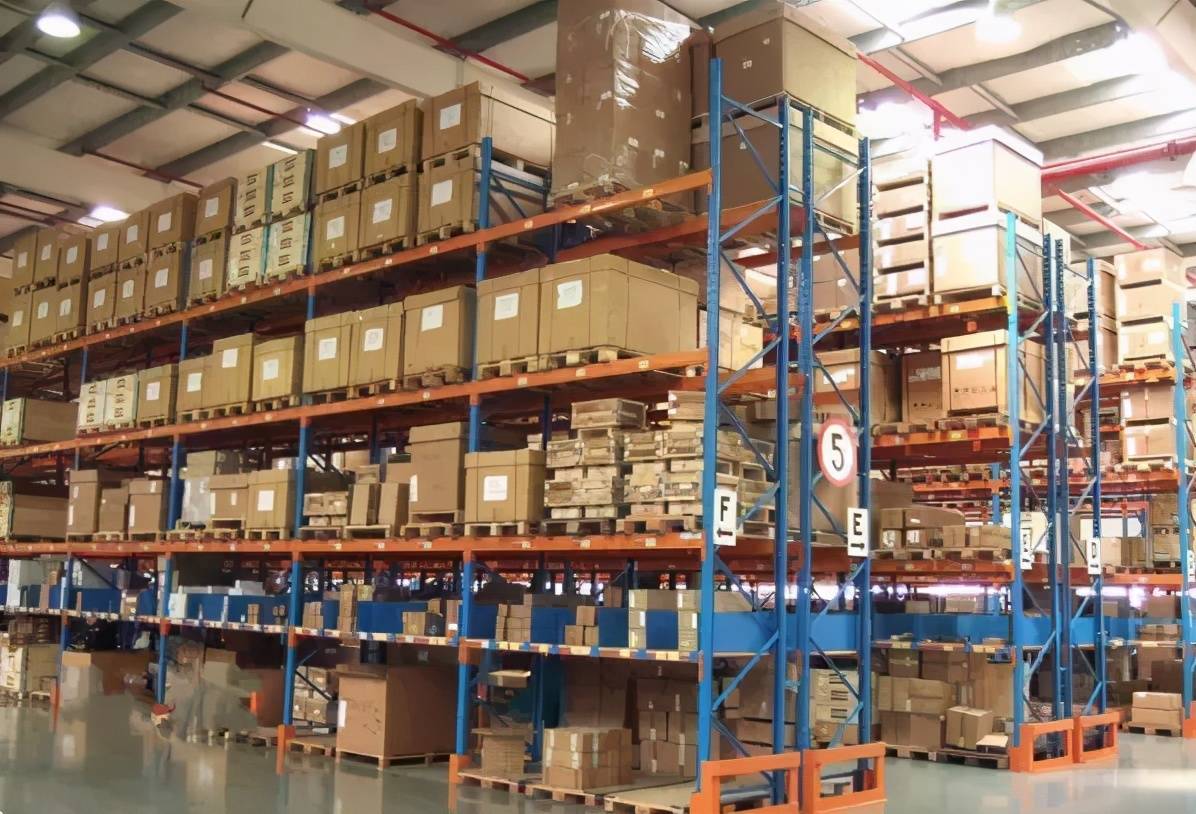
The integration of the Internet of Things (IoT) with packaging systems is revolutionizing the way products are packaged, tracked, and delivered. With IoT automations, manufacturers and logistics companies can optimize their packaging processes, streamline operations, and deliver enhanced customer experiences. From real-time monitoring to intelligent data analysis, IoT-powered packaging systems offer a range of benefits that traditional systems simply cannot match. In this article, we will explore four compelling reasons why businesses should consider incorporating IoT automations into their packaging systems.
- Improved Operational Efficiency: IoT automations enable packaging systems to operate with greater efficiency and precision. Connected sensors and devices can monitor various parameters, such as product weight, dimensions, and quality, in real-time. This ensures accurate and consistent packaging, reducing the risk of errors and minimizing rework. Additionally, IoT-enabled packaging systems can optimize resource utilization by automatically adjusting packaging materials, such as box sizes and void fillers, based on product dimensions. This results in cost savings, reduced waste, and streamlined operations, ultimately improving overall efficiency.
- Enhanced Supply Chain Visibility: IoT-powered packaging systems offer comprehensive supply chain visibility throughout the packaging process. With embedded sensors and RFID technology, businesses can track packages at every stage, from production to delivery. This real-time visibility enables proactive monitoring of package location, condition, and even environmental factors like temperature and humidity. By leveraging this data, businesses can quickly identify and address any issues or delays, ensuring timely delivery and reducing the risk of damaged or lost packages. The increased transparency provided by IoT automations also improves traceability and enables better inventory management.
- Advanced Analytics and Predictive Maintenance: IoT automations enable packaging systems to generate vast amounts of data, which can be harnessed for advanced analytics and predictive maintenance. By analyzing data on packaging performance, equipment utilization, and maintenance history, businesses can gain valuable insights into their operations. This data-driven approach allows for predictive maintenance, where potential equipment failures or maintenance needs are identified in advance, reducing unplanned downtime and optimizing maintenance schedules. Furthermore, advanced analytics can uncover patterns and trends, facilitating continuous process improvement and innovation in packaging systems.
- Personalized Customer Experiences: IoT-powered packaging systems can elevate customer experiences by enabling personalized packaging and tracking options. With IoT automations, businesses can incorporate customer preferences, such as custom packaging designs or personalized messages, into the packaging process. This not only enhances brand identity and customer engagement but also adds a personal touch to the overall product experience. Additionally, IoT-enabled tracking systems provide customers with real-time updates on package location and estimated delivery times. This transparency builds trust and satisfaction, as customers can stay informed and plan accordingly.
Conclusion: IoT automations are reshaping the packaging industry, offering numerous advantages for businesses that adopt them. From improved operational efficiency and enhanced supply chain visibility to advanced analytics and personalized customer experiences, the integration of IoT with packaging systems unlocks new levels of efficiency and innovation. As technology continues to advance, businesses that embrace IoT automations can gain a competitive edge in the dynamic marketplace. By leveraging the power of IoT, packaging systems can become smarter, more connected, and more efficient, setting the stage for a future of optimized packaging processes and delighted customers.

by admin
The Crucial Role of Private Access in Shaping the Future of Smart Cities
The fate of smart cities hinges on an essential element: private access to public assets. As urban centers around the world embrace the concept of smart cities, the involvement of private entities becomes increasingly vital. In this article, we will explore the significance of private […]
Smart Cities
The fate of smart cities hinges on an essential element: private access to public assets. As urban centers around the world embrace the concept of smart cities, the involvement of private entities becomes increasingly vital. In this article, we will explore the significance of private access to public assets and how it will determine the success and sustainability of smart cities.
- Leveraging Private Sector Expertise:
Private companies bring a wealth of expertise, resources, and innovation to the table. Collaborating with these entities allows smart cities to tap into their knowledge and capabilities in areas such as technology, infrastructure development, and service provision. By granting private access to public assets, cities can harness the efficiency and agility of private sector practices to accelerate the implementation of smart city initiatives.
- Funding Smart City Projects:
Building and maintaining smart cities require significant financial investments. Public budgets alone may not be sufficient to fund all the necessary infrastructure and technological advancements. Private sector involvement can bridge this gap by providing additional funding through public-private partnerships (PPPs) or other investment models. Private access to public assets allows for the monetization of these assets, generating revenue that can be reinvested in smart city projects.
- Driving Innovation and Entrepreneurship:
Private companies are known for their ability to drive innovation and take risks. Their involvement in smart city initiatives encourages the development of new technologies, solutions, and business models. By granting private access to public assets, cities create an environment conducive to entrepreneurship and foster a culture of innovation. This collaboration can lead to groundbreaking advancements in areas like transportation, energy management, and data analytics.
- Efficient Service Delivery:
Private sector involvement can enhance the efficiency and quality of services provided in smart cities. Leveraging private access to public assets allows for the implementation of cutting-edge technologies and streamlined processes. For example, private companies specializing in transportation can optimize public transportation systems through the integration of smart mobility solutions. This results in improved service delivery, reduced costs, and enhanced user experiences for residents and visitors.
- Balancing Public Interest and Accountability:
While private sector involvement brings numerous benefits, it is crucial to strike a balance between public interest and private accountability. Governments must ensure that private entities adhere to ethical standards, data privacy regulations, and transparent governance practices. Robust contractual agreements and oversight mechanisms should be established to protect public assets and prevent misuse or exploitation.
Conclusion:
Private access to public assets plays a pivotal role in shaping the future of smart cities. Collaborating with private entities brings expertise, funding, innovation, and efficiency to smart city initiatives. However, it is vital to maintain a careful balance between public interest and private accountability. By leveraging private sector involvement, smart cities can unlock their full potential and provide sustainable, innovative solutions for the benefit of residents and society as a whole.

by admin
Revamp Your Home Office: 9 Creative Desk Decoration Ideas for 2023
In today’s digital age, working from home has become increasingly common. With more people embracing remote work, it’s essential to create a productive and inspiring home office environment. One way to enhance your workspace is through desk decoration. Not only can it add a personal […]
Lifestyle
In today’s digital age, working from home has become increasingly common. With more people embracing remote work, it’s essential to create a productive and inspiring home office environment. One way to enhance your workspace is through desk decoration. Not only can it add a personal touch, but it can also boost your mood and productivity. If you’re looking for ideas to spruce up your desk in 2023, here are nine creative decoration ideas to consider.
- Minimalistic Elegance: Embrace a clean and clutter-free aesthetic with minimalist desk accessories such as a sleek pen holder, a simple desk lamp, and a minimalist clock.
- Greenery Galore: Add a touch of nature to your workspace with small potted plants or succulents. Not only do they bring a refreshing vibe, but they also help purify the air.
- Inspiring Artwork: Hang motivational or inspirational artwork above your desk to provide a visual boost when you need it. Choose pieces that resonate with your goals and aspirations.
- Colorful Desk Organizer: Opt for a vibrant and colorful desk organizer to store your stationery and keep your desk tidy. It adds a pop of color and personality to your workspace.
- Personalized Photo Collage: Create a photo collage of your loved ones, favorite memories, or inspiring quotes. Arrange them in a visually appealing way and place it in a stylish frame on your desk.
- Mood-Boosting Lighting: Choose a desk lamp with adjustable brightness levels to customize the lighting according to your preferences. Soft and warm lighting can create a cozy and inviting atmosphere.
- Functional Desk Accessories: Invest in practical desk accessories like cable organizers, a wireless charger, or a multi-functional desk pad. These items help keep your desk organized and improve efficiency.
- Wall-mounted Shelves: If you have limited desk space, consider installing wall-mounted shelves above your desk. They provide additional storage and display areas for books, plants, and decorative items.
- Ergonomic Upgrades: Prioritize your comfort and health by investing in ergonomic desk accessories such as an adjustable chair, a standing desk converter, or a wrist rest for your keyboard.
By incorporating these desk decoration ideas into your home office, you can create a space that not only looks visually appealing but also promotes productivity and well-being. Experiment with different elements to find a style that resonates with your personality and work needs. Remember, a well-designed workspace can have a significant impact on your overall work performance and enjoyment.

by admin
Exploring the Landscape of Europe’s Metaverse Market: Overcoming Challenges and Embracing Opportunities
The concept of the metaverse has taken the world by storm, promising immersive digital experiences and transformative possibilities across various industries. Europe, as a key player in the global tech scene, is poised to make significant strides in the metaverse market. In this article, we […]
Startups
The concept of the metaverse has taken the world by storm, promising immersive digital experiences and transformative possibilities across various industries. Europe, as a key player in the global tech scene, is poised to make significant strides in the metaverse market. In this article, we will delve into the challenges and opportunities that Europe’s metaverse market presents, shedding light on its potential impact and what lies ahead.
Challenges in Europe’s Metaverse Market:
- Regulatory Hurdles: One of the primary challenges for the metaverse market in Europe is navigating the complex and evolving regulatory landscape. As the metaverse blurs the lines between physical and digital realms, issues related to data privacy, intellectual property rights, and user protection come to the forefront. Striking a balance between innovation and regulation is crucial to foster a thriving and responsible metaverse ecosystem.
- Infrastructure Development: Creating a robust metaverse requires advanced technological infrastructure, including high-speed internet, low-latency networks, and cloud computing capabilities. While Europe has made significant progress in infrastructure development, ensuring widespread availability and accessibility of these technologies across the continent remains a challenge. Bridging the digital divide will be vital for the inclusive growth of the metaverse market.
- Interoperability and Standardization: The metaverse encompasses a multitude of platforms, applications, and virtual worlds. Achieving interoperability and standardization across these diverse entities is essential to enable seamless user experiences and facilitate cross-platform interactions. Establishing common protocols, frameworks, and industry standards will be crucial for the metaverse market to reach its full potential in Europe.
Opportunities in Europe’s Metaverse Market:
- Innovation and Entrepreneurship: Europe has a rich history of fostering innovation and supporting entrepreneurship. The metaverse presents a plethora of opportunities for startups and tech companies to develop groundbreaking solutions and shape the future of digital experiences. Europe’s vibrant startup ecosystem, coupled with access to talent and funding, positions the region to be a hub of metaverse innovation.
- Collaboration and Cross-Sector Integration: The metaverse is not limited to a single industry but has the potential to transform various sectors, including entertainment, gaming, education, healthcare, and more. Europe’s diverse and interconnected business landscape allows for collaboration and cross-sector integration, creating synergies and unlocking new possibilities. Partnerships between technology companies, content creators, and traditional industries can drive innovation and unlock unique metaverse experiences.
- Cultural Diversity and Creative Expression: Europe is known for its rich cultural heritage and creative industries. The metaverse offers a platform for artists, designers, musicians, and creators to showcase their talents, transcend geographical boundaries, and reach global audiences. Europe’s cultural diversity and creative prowess position the region to play a significant role in shaping the artistic landscape of the metaverse.
- Sustainable and Ethical Metaverse: Europe has been at the forefront of sustainability and ethical considerations. The metaverse provides an opportunity to embed these principles into its development. By prioritizing environmental sustainability, user privacy, inclusivity, and ethical practices, Europe’s metaverse market can set a global standard for responsible digital experiences.
Conclusion: Europe’s metaverse market presents both challenges and opportunities as the region embraces the future of digital experiences. Overcoming regulatory hurdles, investing in infrastructure development, and fostering interoperability are crucial for the metaverse’s success. However, Europe’s innovative spirit, collaborative ecosystem, cultural diversity, and commitment to sustainability position the region to be a prominent player in shaping the metaverse landscape. By addressing challenges and leveraging opportunities, Europe can establish itself as a leading force in the evolving metaverse market.








